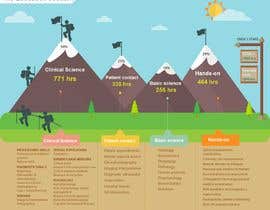Daily Practices That Bring About Neck And Back Pain And Strategies For Prevention
Daily Practices That Bring About Neck And Back Pain And Strategies For Prevention
Blog Article
Authored By-Carstensen Secher
Keeping proper pose and avoiding common risks in everyday tasks can substantially influence your back health. From exactly how you sit at your workdesk to how you raise heavy objects, tiny modifications can make a big difference. Think of a day without the nagging back pain that hinders your every step; the remedy may be easier than you think. By making a few tweaks to your everyday routines, you could be on your means to a pain-free presence.
Poor Pose and Sedentary Way Of Living
Poor position and a sedentary way of life are 2 major factors to back pain. When you slouch or hunch over while resting or standing, you placed unnecessary strain on your back muscular tissues and spinal column. This can lead to muscle mass discrepancies, tension, and at some point, chronic back pain. Furthermore, sitting for long periods without breaks or exercise can damage your back muscle mass and result in rigidity and pain.
To battle inadequate pose, make a conscious effort to sit and stand right with your shoulders back and lined up with your ears. Keep in mind to maintain your feet flat on the ground and stay clear of crossing your legs for prolonged periods.
Integrating normal extending and reinforcing exercises right into your daily routine can likewise help improve your pose and relieve pain in the back related to an inactive lifestyle.
Incorrect Lifting Techniques
Incorrect lifting methods can considerably add to back pain and injuries. When you lift heavy things, remember to flex your knees and utilize your legs to lift, rather than counting on your back muscle mass. Stay clear of turning your body while lifting and keep the item near your body to lower stress on your back. It's crucial to preserve a straight back and prevent rounding your shoulders while raising to prevent unneeded stress on your spine.
Constantly analyze the weight of the object before raising it. If why do i have back pain 's too heavy, request help or usage equipment like a dolly or cart to transfer it securely.
Keep in mind to take breaks during raising tasks to offer your back muscle mass a chance to relax and prevent overexertion. By carrying out proper training methods, you can avoid pain in the back and decrease the threat of injuries, ensuring your back stays healthy and balanced and strong for the long term.
Absence of Regular Exercise and Extending
An inactive lifestyle lacking routine workout and extending can considerably add to pain in the back and discomfort. When you don't engage in physical activity, your muscular tissues become weak and inflexible, causing poor pose and boosted stress on your back. Normal workout aids reinforce the muscles that support your spinal column, enhancing stability and reducing the danger of back pain. Including stretching into causes of back pain can likewise enhance flexibility, preventing stiffness and discomfort in your back muscles.
To avoid back pain caused by a lack of exercise and extending, go for a minimum of thirty minutes of modest exercise most days of the week. Include exercises that target your core muscle mass, as a solid core can help ease stress on your back.
In addition, take breaks to stretch and relocate throughout the day, particularly if you have a workdesk work. Easy stretches like touching your toes or doing shoulder rolls can assist eliminate tension and prevent back pain. Focusing on normal exercise and extending can go a long way in keeping a healthy back and reducing pain.
Conclusion
So, bear in mind to sit up directly, lift with your legs, and stay active to stop pain in the back. By making straightforward changes to your day-to-day behaviors, you can prevent the pain and constraints that include back pain. Deal with your spine and muscle mass by practicing good posture, appropriate lifting strategies, and routine exercise. Your back will thank you for it!
